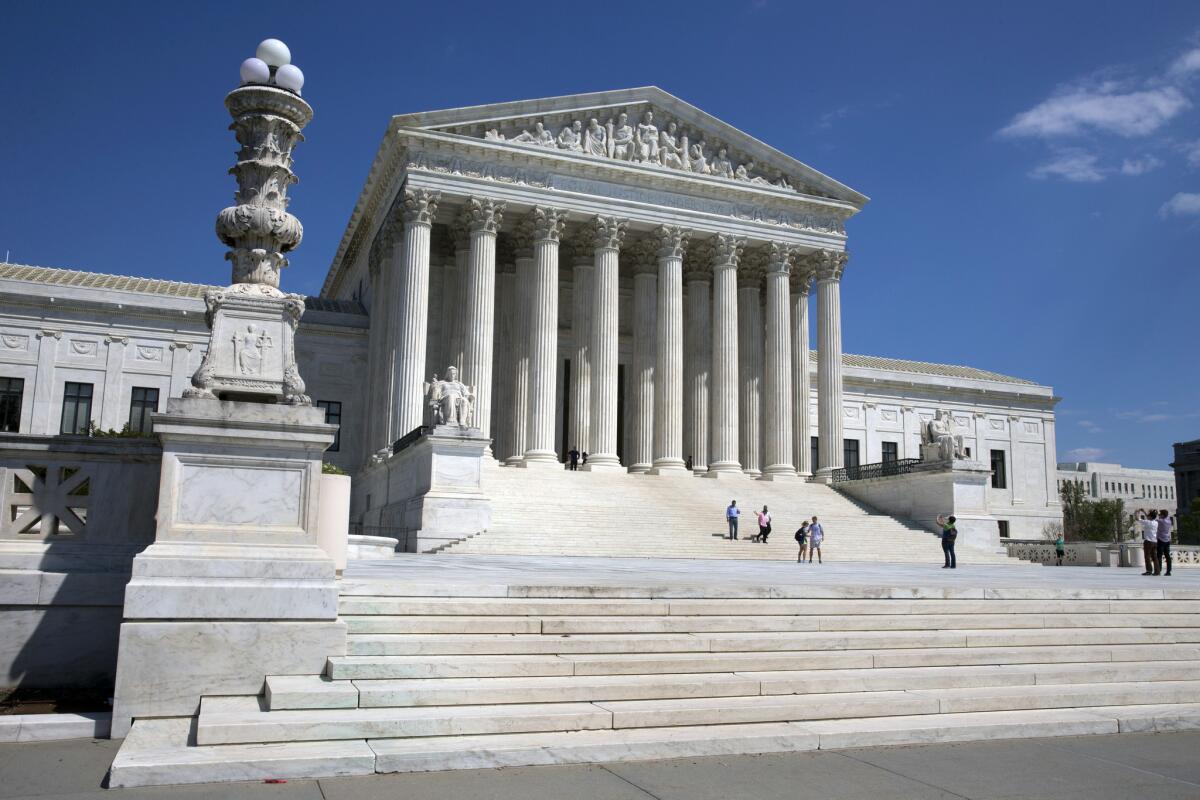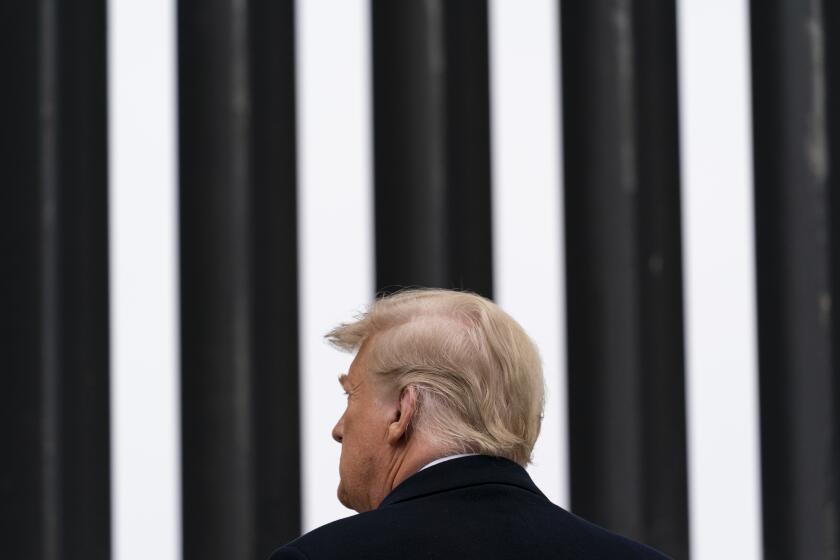Op-Ed: What are the Supreme Court justices hiding?

- Share via
The Supreme Court has long been criticized for its unwillingness to televise, or even record, its proceedings. But debate about transparency at the nation’s highest court should extend far beyond the issue of television cameras. Citizens deserve transparency from the court about how it decides which cases to hear, how justices decide whether to recuse themselves from pending cases, and how the justices’ court-related personal papers are treated after they retire.
The Supreme Court receives more than 7,000 requests a year to overturn lower-court decisions and grants only 70 to 80 of those petitions (it takes four votes to hear a case). Deciding which cases to hear is an enormously important aspect of a justice’s job. Yet the Supreme Court does not disclose which justices decide whether a case is worthy of its attention. In fact, there isn’t even an official record of the votes.
Recently, when Justice John Paul Stevens gave a talk at the law school where I teach, he was asked why these certiorari votes are not public. He paused and then said that, in his 35 years on the court, the issue of publicly disclosing such votes had “never come up, so he had never thought about the question.
His response says a lot about how the justices take for granted their secrets and the court’s lack of transparency.
After reflecting on the question, Stevens noted that the court shouldn’t continue a practice simply because “it’s always been done that way,” but he also worried that if certiorari votes were disclosed, the public would assume that a justice’s vote to hear a case indicated how he or she would rule on the merits of that case. Confusion about what the votes mean is not, however, a justification for keeping them secret from the American people.
And then there is the issue of recusals. This year, the court granted certiorari in an important case that gets to the heart of how Americans watch television. The court announced that “Justice [Samuel A.] Alito [Jr.] took no part in the consideration or decision of this petition,” meaning he had recused himself from the case. A few days before the argument, however, the court announced that Alito was “no longer recused” from the case. No explanation was given for either decision.
Over the last few years, Justice Elena Kagan, who previously served as solicitor general under President Obama, has recused herself from more than 100 cases, including two major affirmative action decisions and an important Arizona immigration controversy. But she has never offered any reasons for those recusals. Moreover, when there was significant public outcry about her participation in the Obamacare case and a formal motion for argument on the question, she not only didn’t recuse herself, she also never explained the reasons for her decision.
There is no requirement that justices justify their recusal decisions, and there have been only three occasions in the court’s history when a justice has publicly explained a recusal decision in writing. A justice’s recusal, or even a significant controversy about a justice’s participation in a case, raises fundamental issues about the rule of law, and complete silence from the court on these questions does not inspire public confidence. Justices should be far more forthcoming in explaining why they have recused themselves from a case, or why, when the issue has been seriously raised, they have not.
Partly because of the court’s many secret practices, justices’ personal records and papers are of vital historical significance. Although there is an important federal law governing what happens to a president’s official records and papers after he leaves office, there is no similar statute — or even official policy — for Supreme Court justices. At present, they may keep, dispose or place conditions on their papers as they see fit.
Former Chief Justice Warren E. Burger’s records, many of which are presumably administrative, will not be available to the public until 2026, even though he retired in 1986. Justice Byron R. White destroyed many of his files, including those relating to the landmark Miranda case, which dealt with police interrogations, and Justice William J. Brennan Jr. allowed one law professor exclusive access to his records for almost 20 years, much to the consternation of journalists and historians. Justice David H. Souter has embargoed his papers for 50 years.
I am not suggesting that the public should have immediate access upon retirement to all of a justice’s official records, and the case can be made that certain pre-decisional documents should never be made public. But Supreme Court justices are government officials whose salaries are paid by the taxpayers, and their records, like those of the president, should be deemed public property and available for review after taking into account reasonable privacy concerns.
The current intense level of secrecy at the court can’t be justified when weighed against the very real benefits of transparency. The highest court in the land needs to be accountable to the American people. The ban on television cameras is almost certain to fall one day, but that will be just the beginning of the battle to make the Supreme Court more transparent.
Eric J. Segall, a law professor at Georgia State University, is the author of “Supreme Myths: Why the Supreme Court Is Not a Court and Its Justices Are Not Judges.”
More to Read
A cure for the common opinion
Get thought-provoking perspectives with our weekly newsletter.
You may occasionally receive promotional content from the Los Angeles Times.









